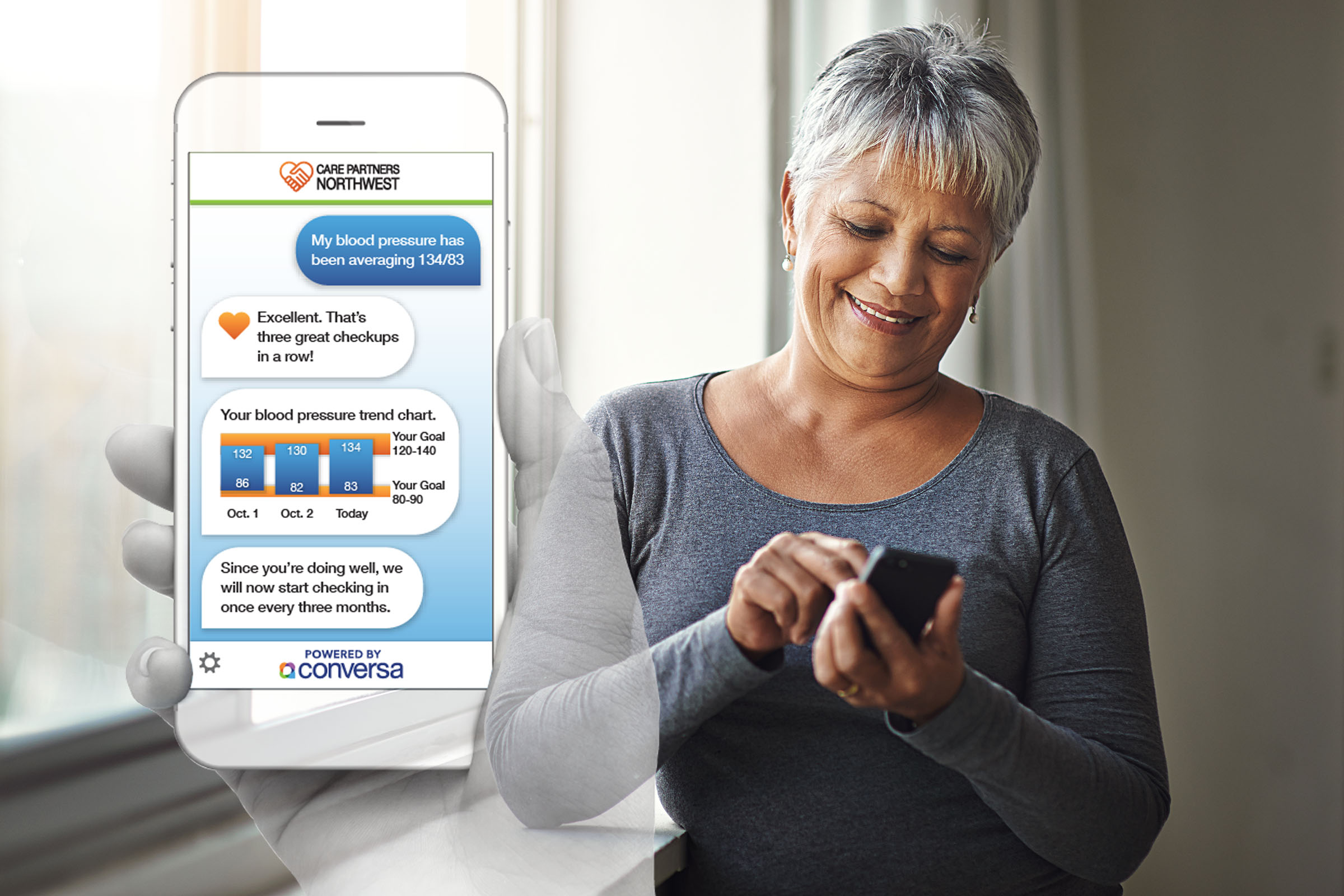To improve access to care and relieve clinician burden, healthcare is beginning to explore conversational artificial intelligence (AI) to automate certain interactions with patients. But where quality of care is imperative, what is the proper use of conversational AI (such as chatbots)?
.jpg) The time is right for conversational AI. Automated outreach to patients can help satisfy the requirements of value-based care and increased patient demand for services. Our limited, human-intensive and expensive resources can only do so much.
The time is right for conversational AI. Automated outreach to patients can help satisfy the requirements of value-based care and increased patient demand for services. Our limited, human-intensive and expensive resources can only do so much.
Consumers and providers are eagerly embracing and interacting with these technologies, and patient-generated health data is starting to prove its worth.
A recent Accenture study found that most consumers are likely to use intelligent virtual clinicians for many purposes, including monitoring health conditions, supporting positive lifestyle behaviors and diagnosing new problems.
WBR Insights found in a recent study that within the next 24 months, 79% of healthcare providers will roll out automated healthcare solutions, with a focus on automated patient engagement.
Healthcare and consumers seem to be aligned. But what will it take to achieve greater automation?
What is this chatbot thing of which you speak?
Conversational AI can take many forms, but at its core it is any automated conversation, from simple phone trees to chatbots on Facebook, or Siri or Alexa. Regardless of its form, the success of conversational AI comes from how “intelligent” it is, which requires the combination of two sources of data:
Profile information - what we know about the patient, including demographics, medical history, known conditions and even what your preferences are for literacy and tonality.
Domain knowledge - what we know about best practices in healthcare, including evidence-based guidelines, research and hundreds of years of learning in medicine.
When automated conversations combine these two sources effectively, they become “intelligent.” Combine that with the ability to properly interpret responses and be appropriately empathetic, and we’ve got the makings of a great conversation.
 The power of combining profile information and domain knowledge
The power of combining profile information and domain knowledge
We all know what it’s like to have effective combinations of profile information and domain knowledge; it’s what we experience during a great doctor visit.
For example, the first question doctors will ask anyone with diabetes is: How have your blood sugars been? They know the patient has diabetes (profile information), and they know that keeping blood sugars lower will reduce the risks such as neuropathy, retinopathy and heart disease (domain knowledge).
It may sound straightforward for a bot to replicate this behavior, but most bots can’t interpret the complex codes in an EHR system. There are about 800 SNOMED, ICD9 or ICD10 codes that could indicate this patient needs this question. And if you wanted to infer that they should get this question based on their medication profile? There are about 6000 NDC or RxNorm codes that represent a diabetes medication.
But with the right taxonomy-driven profiling system, that structured, coded EHR data can really come to life. It can trigger just the right domain knowledge for the right patient, and drive very personalized, interactive conversations with the patients.
.jpg) The future of AI in healthcare
The future of AI in healthcare
Today, healthcare is still very transactional. Services are often expensive, cumbersome and logistically difficult, so we only seek healthcare when we absolutely must.
Conversational AI is one example of the intelligent systems that will change this model and address a broader range of health and wellness issues. While we can start with the rich profile information (i.e., EHR data) and the domain knowledge we possess, the ability to add to that data with machine learning will be limitless. Scores of examples come to mind—for instance, a diabetic patient might walk into a restaurant and receive an alert with healthy menu selections. Or the patient can ask to be notified when the local walking club is scheduled for a route in his neighborhood.
We are just beginning to conceptualize how constant and regular the information and guidance around health and wellness might be, five or ten years from now. It will soon be a reality, and we won’t know what we did without it.
Find out more about Allscripts CareInMotion population health platform. Call us at 1-800-334-8534 or click here for a request form.
Editor's Note: This article originally appeared on Allscripts Blog: It Takes A Community 